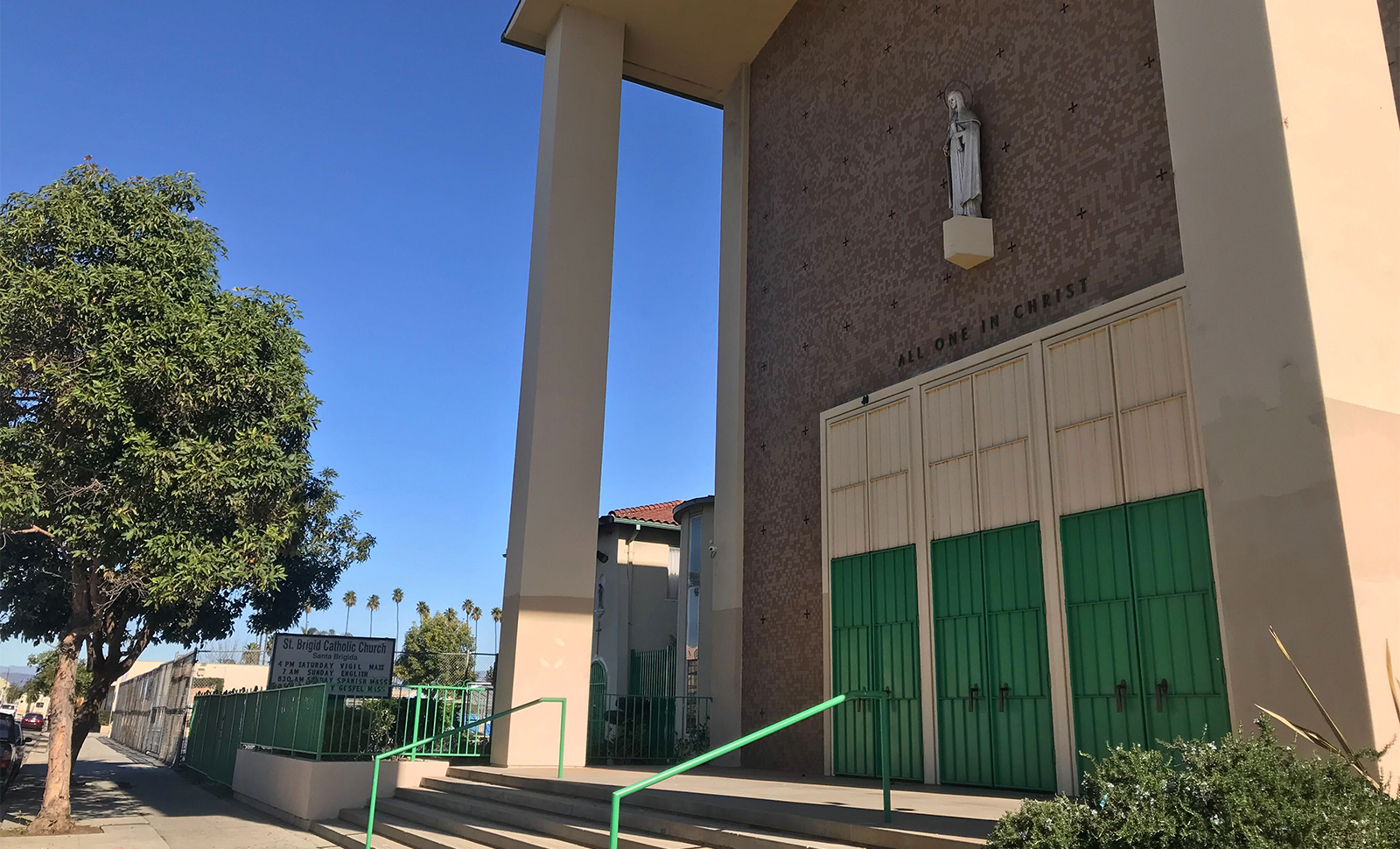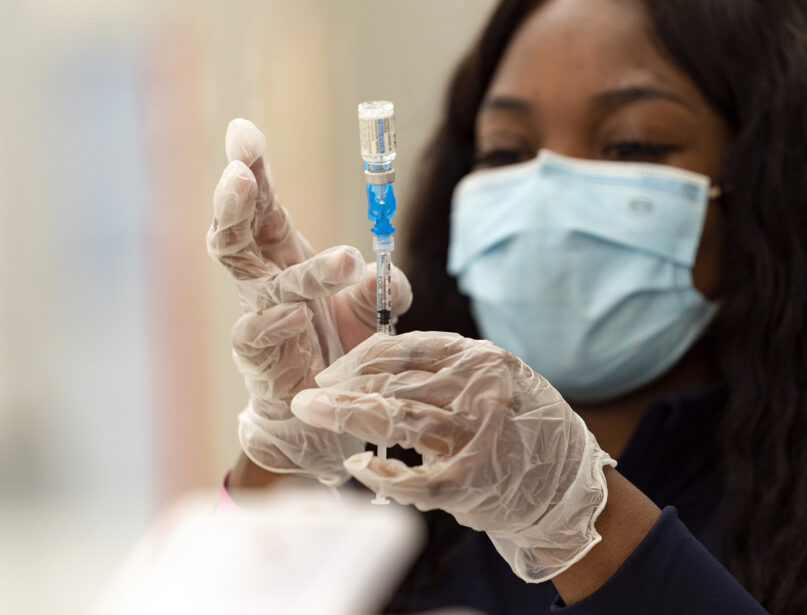LOS ANGELES (RNS) — The goal: to vaccinate 600 eligible people who live within a two-mile radius surrounding St. Brigid Catholic Church, a Black and Latino parish hit hard by COVID-19 in South Los Angeles.
This effort is part of a two-day pilot project in partnership with the County of Los Angeles and One LA, an organization affiliated with the Industrial Areas Foundation, that includes churches, synagogues, schools and other nonprofit groups.
Vaccinations will take place at St. Brigid Catholic Church on Friday and Saturday (March 12 and 13) and will be administered by St. John’s Well Child and Family Center.
“We must not leave anyone behind,” said the Rev. Kenneth Keke, pastor of St. Brigid Catholic Church, in a statement. “We have to change the story that Blacks and Latinos can’t access the vaccine.”
RELATED: Churches in LA’s working-class neighborhoods urge: ‘Bring the vaccine to the people’
This effort comes more than a month after One LA in early February urged the county to do more to vaccinate residents in neighborhoods that need it the most — areas such as El Monte, South LA, Boyle Heights and Pacoima — where Latino and Black residents, many who are essential workers, have been hit hard by the virus.
Latinos and Black people have not only been among the groups most disproportionately affected by the virus, but data in LA County has shown residents in wealthier areas such as Beverly Hills were vaccinated at higher rates than residents in areas of South LA, home to large populations of Latino and Black people.

St. Brigid Catholic Church in South Central Los Angeles. RNS photo by Alejandra Molina
As part of this pilot program, One LA leaders have gone door to door to distribute flyers about the vaccination site at the church. A mailer informing residents of the two-day vaccine program at St. Brigid was also sent to every address in the area.
Phaebra Croft, a leader at St. Brigid Church and One LA, has spoken to more than 100 eligible residents, including seniors and essential workers.
“A year into this pandemic, we refuse to stay at home anymore,” Croft said in a statement.
“Don’t let anyone try to convince you that our communities don’t want this vaccine. Demand is high and will only get higher,” Croft said.
RELATED: Latino churches in Los Angeles County will now serve as COVID-19 testing sites
Those currently eligible to be vaccinated in Los Angeles County include people who are 65 or older, health care workers, residents and staff of skilled nursing and long-term care facilities, educators, janitors, grocery store workers and veterinarians, among others.
As some vaccination sites in the county have encountered a number of ineligible people trying to get the medicine, Janet Hirsch, a One LA leader from Temple Isaiah, said partnerships like this can help take the vaccine to the people who need it the most.
One LA leaders reached out to area residents through phone calls, mailers and door-to-door canvassing. Through that communication, they assigned residents appointment times to show up.
People must show proof of eligibility and that they are residents of the county, which could include an identification card or pay stub.
“For this to be successful in the long run, the missing element is us — clinics, churches, schools and others that know their people and their neighborhood and can direct the limited supply into the arms of those most at risk, rather than overwhelmingly to those that know how to game the system,” Hirsch said.





